#Micrographia
Explore tagged Tumblr posts
Text
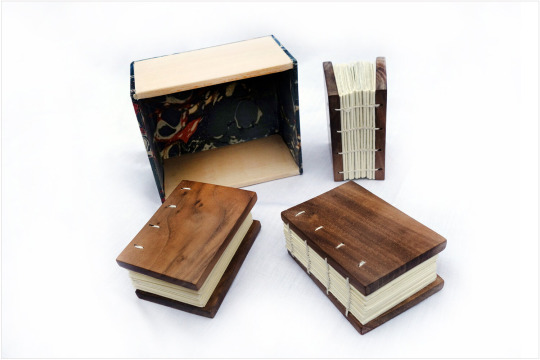

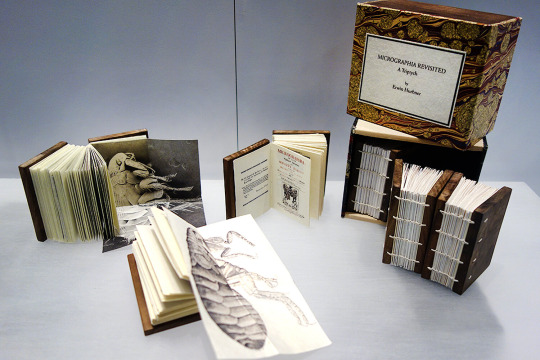



Micrographia Triptych by Erwin Huebner [a]
5 notes
·
View notes
Text
A marvelous ant in Micrographia.(1665) The ant gave Robert Hooke a lot of trouble since it wouldn't quit moving around as he tried to draw it. He ended up dipping it in brandy, … though he does say that it woke back up and ran away. Gotta love this girl for surviving!
He supposes that the ant was drunk… But it probably was simply deprived of O2. I've seen ants who fell into water revive in a similar way when their spiracles (pores) dry off and they can breathe again.

#ants#antposting#bugs#insects#ant#myrmecology#antblr#antkeeping#micrographia#microscope#Robert Hooke#drunk ant#drunk insects
28 notes
·
View notes
Text
The deepest discoveries show us the greatest excellencies.
from Micrographia by Robert Hooke (1665)
#micrographia#robert hooke#micrography#microscopy#microscope#deepest#discoveries#greatest#excellencies
2 notes
·
View notes
Text

Copper-plate engraving of a fly under a microscope. From Robert Hooke’s Micrographia (1665). Photo by me, 2024.
Hooke was the inventor of the compound microscope, which he used to create illustrations of plants, minerals, and animals in never-before-seen detail. As far as I know, this is the first published drawing of a fly at this scale. It’s really amazing to see the images in person, even for a modern observer — imagine how mind blowing it must have been in the 17th century!
The book also includes another fold-out print of a louse that is so large I couldn’t even photograph it sitting down!
#robert hooke#micrographia#microscope#scientific illustration#engraving#royal society#history of science
1 note
·
View note
Text
[...] the adding of artificial Organs to the natural; this in one of them has been of late years accomplisht with prodigious benefit to all sorts of useful knowledge, by the invention of Optical Glasses. By the means of Telescopes, there is nothing so far distant but may be represented to our view; and by the help of Microscopes, there is nothing so small, as to escape our inquiry; hence there is a new visible World discovered to the understanding.
Robert Hooke. Micrographia.
0 notes
Text
At this point i am not even writing letters i am writing dostojevski books
#vampire complains#i also have micrographia do you know how much i wrote just to set up the letter#my beautiful letter recivers better get glasses 3 coffees and cigarettes because this is a dostojevski novel#i have a lot to say evidently
4 notes
·
View notes
Photo
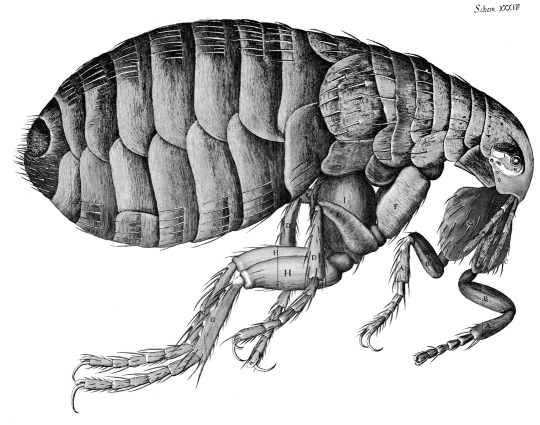
Flea as seen through a microscope, one of the many wonderful images from Micrographia (1665), the groundbreaking work of microscopy by English polymath Robert Hooke, who died #onthisday in 1703. Featured in our essay “Scurvy and the Terra Incognita”: https://publicdomainreview.org/essay/scurvy-and-the-terra-incognita #otd
68 notes
·
View notes
Text
Oh man, this is an *interesting* one.
"It was I who begged patience, certain as I was that my work on Micrographia might have rendered a remedy for that most awful plague. It was I who warned that to enact a Protocol against the great city of London itself was a step beyond the rights of our position, but you were, as is so oft the case, correct in your steadfastness and I confess purgation of all that most dangerous and unfit knowledge was both necessary and good." (bolding mine.)
In 1665 there was an outbreak of bubonic plague in London; during this time Robert Hooke was pioneering the study of life on a microscopic scale. In 1666 the Great Fire of London destroyed a major portion of the city; Hooke played a major role in helping the city to rebuild, and rose to wealth and respect as a result.
So:
1. The plague year had a supernatural cause (or Hooke and Boyle thought it did, at minimum.)
2. The Great Fire of London was probably a result of the Protocol being carried out. Yikes.
3. The Protocol, however, was not about fighting disease directly. It was about purging "dangerous and unfit knowledge." This lines up with the 1666 fire: along with everything else lost to it, some £150,000 worth of books were destroyed, which... that's in 1660s money. I'm not sure how many books that would have been but it had to be quite a few.
So if this universe had the equivalent of Leitners, this might be where a bunch of them went. Also seems increasingly likely that the Magnus Institute fire was an enactment of the Protocol.
Not even touching the whole apple thing right now other than to say I'm doubling down on my suspicion that ink5oul's tattoo is a reference to the serpent in the Garden of Eden. Got a lot of other thoughts but they're going to have to wait for after work.
#tmagp#tmagp speculation#tmagp 19#the magnus protocol#tmagp spoilers#the magnus protocol spoilers#pondering magpods
153 notes
·
View notes
Text
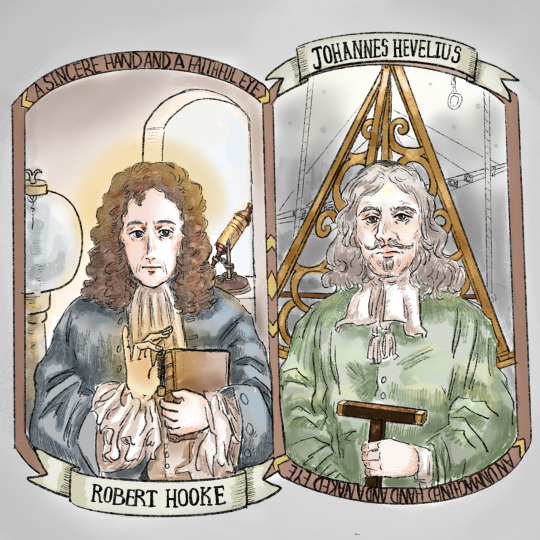

Hooke’s view of natural philosophy is encapsulated by the phrase, ‘a sincere hand and a faithful eye’, which occurs in the preface of his best-known publication, Micrographia (1665). The phrase is related to Hooke’s belief, shared by many at the time, that the human capacity for sense perception and knowledge had been corrupted because of Original Sin. Before the Fall, Adam was capable of sharp perception and knowledge that current humans were not capable of. The brain, imagination, and memory had also been affected and become fallible, resulting in dogmatic and erroneous philosophy that needed to be corrected and established anew. Reforming natural philosophy thus required rectifying the limited power of the human senses. This could be achieved, Hooke stated, with instruments that acted as ‘artificial organs’ for humans. (…) An examination of Hevelius’s illustration of the transversal markings with a ‘magnifying glass’ revealed, according to Hooke, that they were uneven and thus inaccurate, due to ‘a naked eye and an unmachined hand’. This was the opposite of a ‘sincere hand and a faithful eye’, where instruments were essential in correcting and augmenting the limitation of the human senses.
-‘A sincere hand and a faithful eye’: the many interests of Robert Hooke (1635–1703), Sachiko Kusukawa
10 notes
·
View notes
Text
"Monk's Cell" is a Mandela Effect?
Not long ago, I was browsing a post from the now-abandoned Hooke's London blog when I came across this interesting exchange:
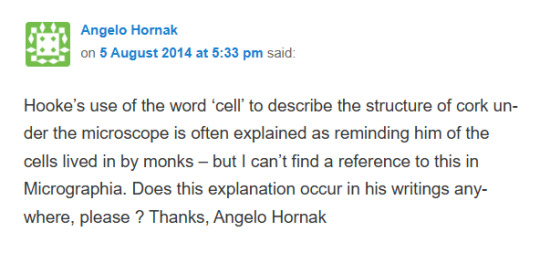
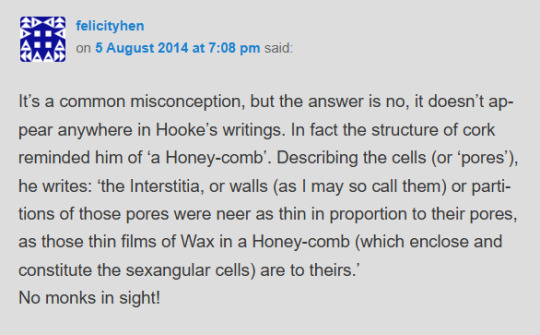
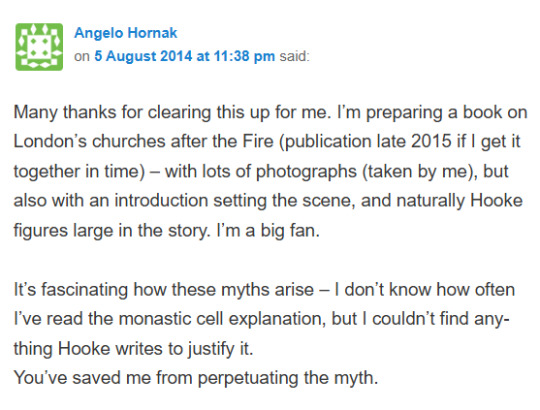
Wait... what?
But seriously... I've been poring over Micrographia (if you'll excuse the pun) and, while Hooke makes frequent use of the word 'cell' to describe what he interchangeably refers to as 'pores' or 'boxes', Henderson is indeed correct—there are no monastic references to be found.
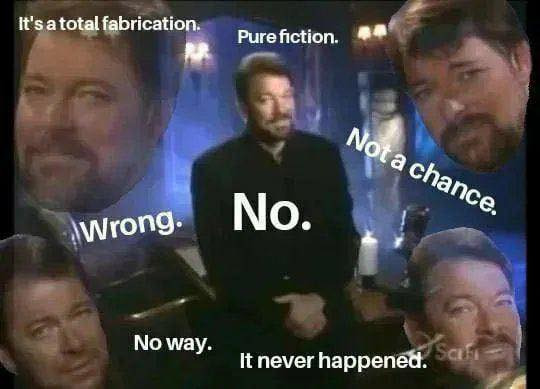
This, of course, doesn't preclude the possibility that Hooke coined the term, or imply that Micrographia wasn't where it first originated in the context of microbiology.
Since the word 'cell' simply means 'small room' in Latin, the most reasonable explanation is that someone, at some point, made the assumption that Hooke had a specific variety of 'small room' in mind when he created the neologism.
The legend probably survived because it sounded like a cutesy little factoid that no one bothered to fact check.
Still, this is about as shocking as the time when Rob Iliffe casually dropped in a podcast that the famous "great ocean of truth" quote attributed to Newton was completely apocryphal.
0 notes
Text
Notes/Theories on 'the Protocol' as of Ep. 20:
First known enactment (as of now) is most likely the Great Fire of London, 1666, the event which is widely accredited in pop culture with ending the plague in London. (This is infered from Hooke's letter in Ep. 19, as he talkes about the 'Dread emmission', a possible reference to the plague being 'bad air', and about his book Micrographia, published in 1665, which was the first major book on observations through a microscope, i.e. plague fleas)
The enactment which followed Hooke's letter was most likely Newton's Lab Fire, which occured in the 1680's (probably not long after 1684 in the Protocol timeline), and was invoced with the purpose of destroying his alchemical notes and studies.
The Protocol was also invoced with the destrction/burning of the Magnus Institute, 1999. At the time of this enactment, the head of the (now defunct?) Response sector of the OIAR was name William Price, a name shared by a C.19th druid, who happens to be the man who proved in court wasn't illegal to cremate people.
The Protocol also seems to have been enacted on the Hilltop Centre of the Oxford People Trust on 01/12/2015 (see Ep. 7). It was burned to the ground.
All together, while the Protocol seems to present itself as a more desolation-aligned event/pseudo-ritual, I am hesitant to mark it as anything supernatural just yet. Going of the description of the enactment of Ep. 7, it seems to be more of a standard technical reaction to the supernatural occurings, more along the lines management-wise of Joshua Gillespie's ice-on-the-coffin-key and Alexander Scaplehorn's fucking-booking-it-out-of-there than anything else, except more focused on eradication of the supernatural. Thank you for coming to my T(MagP)ED Talk, please throw any corrections/additions at me.
#credit to buildoblivionthenwewilltalk for the William Price point#the magnus protocol#tmagp#tmagp spoilers#tmagp theory
21 notes
·
View notes
Text
~~~Spoilers for tmagp 19~~~
Just finished listening to ep 19, first of all SIR ISAACE NEWTON WHAT ARE YOU DOING HERE?!?!!?
Secondly, I think we now know what the protocol actually is! I’ve seen no one else talk about it, but as me and my partner listened to it together, they pointed out that “the protocol” is probably fire.
🔥🔥🔥🔥FIRE!!!!🔥🔥🔥🔥
JUST HERE ME OUT HERE. Towards the end of the statement/incident, Robert Hooke says “I propose that we enact the Protocol but limit it only to his laboratory, destroying his research” implying that the protocol is a destructive force that can be controlled or managed.
At the beginning of the letter, Hooke claims “certain as I was that my work on Micrographia might have rendered a remedy for that most awful plague. It was I who warned that to enact a Protocol against the great city of London itself was a step beyond the rights of our position.” A plague you say? Perhaps like The Great Plague? The second wave of the Black Death, which came to England in 1665? 19 years before the letter was written in 1684? A ghastly plague that devastated England, until 1666 when a little event occurred known as The Great Fire of London! Basically, I believe “the protocol” is just a code word for kill it with fire, since these respectable gentlemen can’t just openly admit to arson in their writing.
This isn’t even the first time we’ve seen fire used as a weapon against the supernatural. We all love to joke about how Gertrude should have been a desolation avatar with how she solves all her problems with C4 (which is just a more explosive version of fire) and Gerry destroyed most of Leitner’s books by burning them.
Plus, we’ve already seen instances of this fiery protocol taking place in previous episodes. In the very first episode, we hear about how there was a fire at the Magnus Institute, and we Know from the arg that those guys were up to something spooky and shady. Then in episode 7, the Hilltop Centre is set ablaze, seemingly to prevent a ritual from taking place.
This all leads us to the conclusion that “the protocol” is indeed fire, or more specifically the use of fire to stop serious supernatural threats. Please let me know me your thoughts on this theory. This is my first time presenting a theory to the fandom so I’d love to hear what you all think in the comments. <3
20 notes
·
View notes
Text
magnus protocol 19 theory
OKAY SO WE'VE GOT A PROTOCOL IN THE BOOKS WE'VE GOT AN IDEA OF WHAT THE PROTOCOL MIGHT BE
BASICALLY REMOVING ANY RECORD OF CERTAIN INFORMATION IN A CERTAIN AREA?? "I propose that we enact the Protocol but limit it only to his laboratory, destroying his research and correspondence". Also Hooke was maybe about to discover how to stop/slow/cure the BUBONIC PLAGUE??? AND THEY USED THE PROTOCOL TO DESTROY THAT INFO???? "It was I who begged patience, certain as I was that my work on Micrographia might have rendered a remedy for that most awful plague."
I ONLY HAVE ONE QUESTION NOW FOR Y'ALL
... why do we think the magnus institute currently has no trace of papers anywhere
bonus theory: is the oiar's file work to recreate the institute's catalog/database??
@jonnywaistcoat when i get you -
#the magnus protocol#tmagp#tmagp spoilers#the magnus protocol spoilers#i'm gonna fucking lose it#another piece of the puzzle methinks#jonny sims when i get you
21 notes
·
View notes
Text


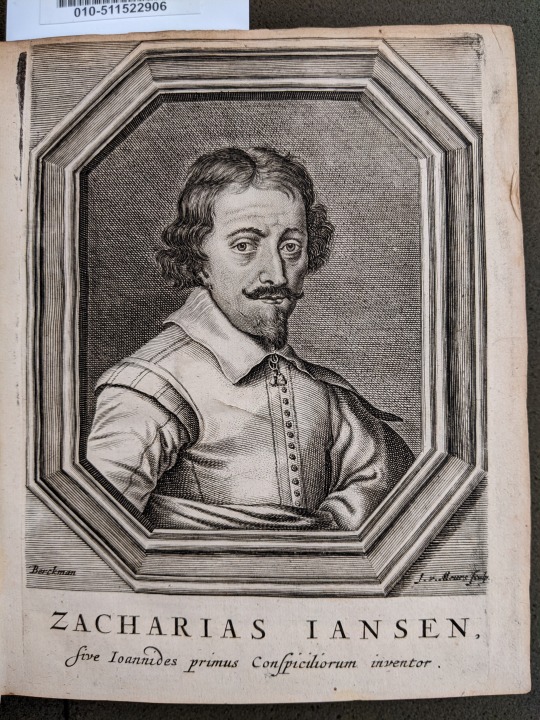
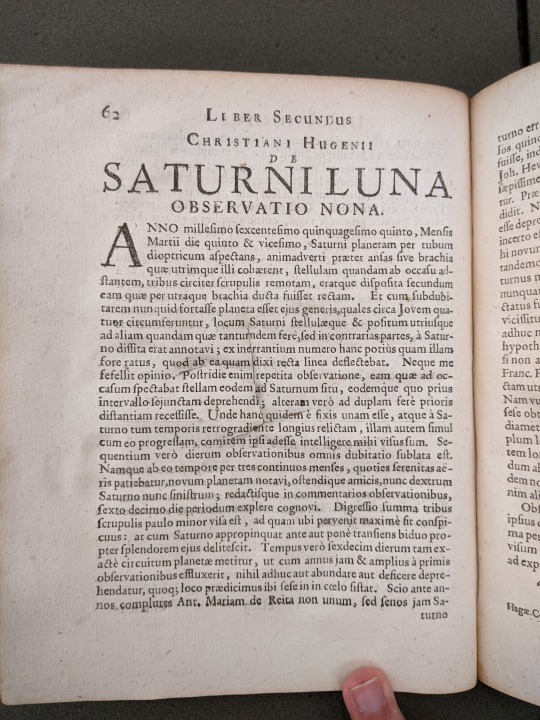
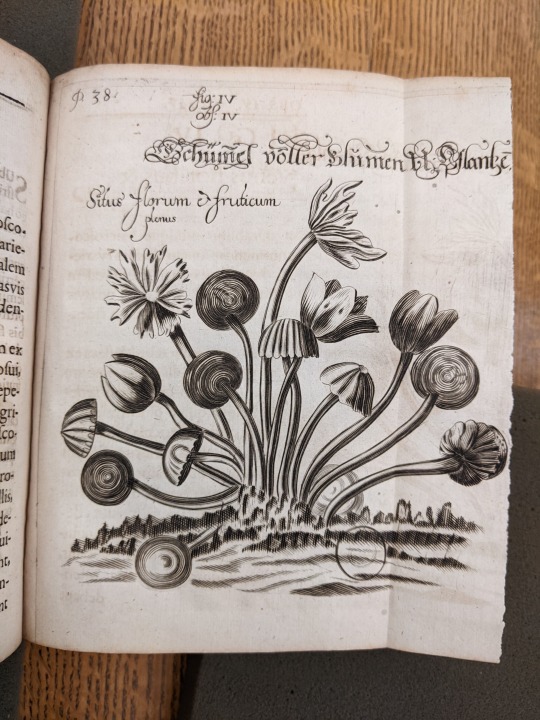

We have an exciting new acquisition to feature this Friday! Last week, a generous donor gave the Libraries a copy of Pierre Borel's De Vero Telescopii Inventore (1655). This work is a history of the invention of the telescope from antiquity to the time of writing. At the time, both Hans Lippershey and Zacharias Janssen claimed to be the inventor of the telescope, and Pierre Borel found Janssen's claims to be more convincing. Present-day historians have tended to recognize Lippershey instead, but they do give Janssen credit for inventing the compound microscope.
Borel also printed a letter from Christiaan Huygens' in which he details his observations of Titan, one of the moons of Saturn. This letter also contained Huygens' identification of the rings of Saturn in an anagram - a sly way to sneak the idea into print without giving it away before Huygens' own publication of Systema Saturnium in 1659.
This volume is bound with several others: Johann Franz Griendel's Micrographia nova (1687); Anton van Leeuwenhoek's Ontledingen en ontdekkingen van levende dierkens in de teel-deelen van verscheide dieren, vogelen en visschen (1696); and Govard Bidloo's Brief aan Antony van Leeuwenhoek (1698).
Many thanks to donor Rick Hardin for this newest addition to the collection.
De vero telescopii inventore : cum brevi omnium conspiciliorum historia : ubi de eorum confectione, ac usu, seu de effectibus agitur, novaque quaedam circa ea proponuntur : accessit etiam centuria observationum microcospicarum / Authore Petro Borello, regis Christianissimi consiliario, & medico ordinario. VAULT QB88 .B72 1655
#history of science#histsci#astronomy#history of astronomy#newacq#bookhistory#rare books#mizzou#special collections#university of missouri#libraries#kelli h
34 notes
·
View notes
Text
This is just unrelated trivia but it was really funny to me to read that the guy who published Hooke's Micrographia, which was specifically mentioned by name in this episode of magnus protocol, was named John Martin
7 notes
·
View notes
Text

Back in the day, microscopes were decorated so fancily. 😍 This compound microscope was used by English naturalist Robert Hooke back in 1665. He created the first book to illustrate insects and plants through the microscope, called Micrographia, which encouraged other scientists to also start exploring the world with microscopes. 📷 : National Museum of Health and Medicine
2 notes
·
View notes